Dividing vegetables into high, low and medium consumers simplifies fertilization and cultivation planning in the garden.
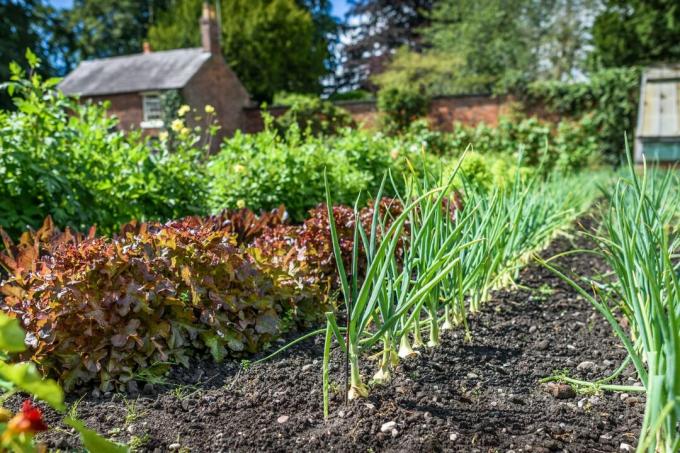
In this article you will find lists for heavy feeders, medium feeders and weak feeders as well as some tips on which weak, Medium and heavy feeders are suitable for raised beds and what to consider when fertilizing heavy feeders, for example should.
contents
- Why do you differentiate between heavy, medium and weak consumers?
-
heavy feeder
- What are heavy feeders?
- Examples of heavily consuming plants
-
medium eater
- What are middle eaters?
- Examples of medium-consuming plants
-
weak feeder
- What are weak feeders?
- Examples of weak-eating plants
- Summary: How to fertilize heavy, medium and weak feeders
Why do you differentiate between heavy, medium and weak consumers?
Different vegetable plants have different demands on their location. This applies, for example, to lighting, water supply and pH. Plants also differ significantly in terms of their need for nutrients. Based on the nutrient requirements, vegetable plants are therefore divided into heavy consumers, medium consumers and weak consumers. This makes it easier to get an overview of fertilizer requirements and to plan
crop rotations and creating cultivation plans. Classically, there are always heavy, medium and weak consumers in exactly this order on a field in order to optimally utilize the available nutrients from the fertilization.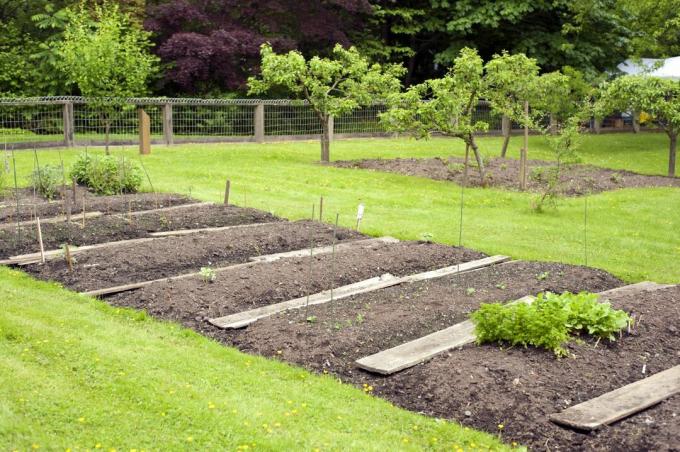
Also at Planting raised beds the classification is relevant. In the year of Filling raised beds the soil is usually still rich in nutrients and additional nutrients are supplied from the manure or compost layer. In the first year, heavy feeders will therefore thrive in raised beds. After heavy feeders have already removed a lot of nutrients from the soil, there is usually still enough left over for medium feeders, which can be planted in raised beds the following year. Finally, in the third year, you will mainly find weak feeders in raised beds. You'll use up the remaining nutrients before it's usually time to fertilize the raised bed or apply another coat.

Tip: Plants cannot be easily divided into categories. The transitions between high, medium and low consumers are therefore fluid. For example, corn is sometimes referred to as a heavy feeder and sometimes as a medium feeder. In addition, it depends on the variety and the remaining growing conditions, how many nutrients a plant can convert.
heavy feeder
Strongly consuming plants are the most nutrient-hungry representatives in the vegetable patch. Usually they do not grow properly without regular fertilization, remain smaller and produce lower yields. Examples of typical heavy feeders are tomatoes and potatoes (Solanum tuberosum).
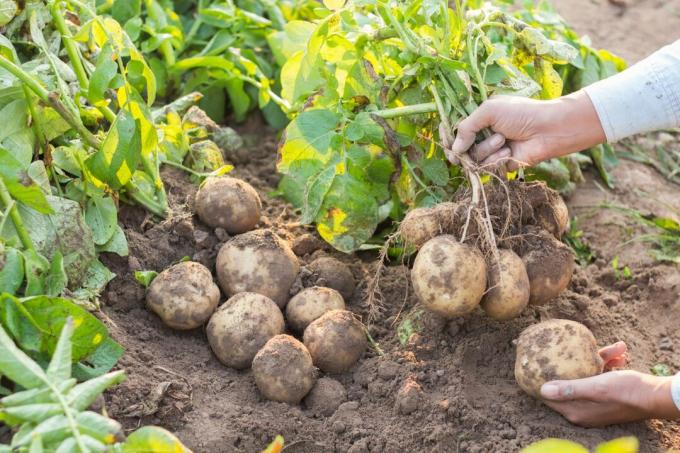
What are heavy feeders?
Growth requires nutrients, which the plants must absorb from the soil. In many cases, the question of which plants are heavy feeders can be answered with: Plants that quickly form a lot of leaf mass. This applies, for example, to heavy feeders such as maize (Zea mays), Tomatoes (Solanum lycopersicum), cucumbers (Cucumis sativus) and cabbage (Brassica) to.
Most heavy-consuming vegetables have an overall nitrogen requirement of around 25 g nitrogen per m3 over the entire growing season2. This amount is thus removed from the soil during a growing season by heavy-feeding vegetables and should therefore be added to the soil in the form of compost and organic fertilizers. For example, our primarily organic is suitable for this Plantura organic tomato fertilizer, which with its NPK ratio is precisely tailored to the nutrient requirements of vegetables such as tomatoes or cucumbers.
In order to determine how well the soil is already supplied with nutrients, it is worth taking soil samples in autumn. Then you have a clue and can apply the right amount of fertilizer or compost in the spring for planting. Heavy feeders should also be fertilized regularly during the growing season. Well suited for this is ours, for example Plantura Organic Tomato & Vegetable Fertilizer. It is phosphorus-reduced to conserve resources and compensates with microorganisms that can improve soil use and even protect roots from disease.

Plantura Organic Tomato & Vegetable Fertilizer
Highly effective organic liquid fertilizer
with an NK ratio of 4-5
for all types of vegetables & berries,
safe for pets and garden animals
Examples of heavily consuming plants
Below is a list of heavy-duty vegetables.
- aubergine (Solanum melongena)
- cucumbers (Cucumis sativus)
- potatoes (Solanum tuberosum)
- All large types of cabbage such as B. white cabbage (Brassica oleracea convar. capitata var. Alba), Red cabbage (Brassica oleracea var. capitata f. rubra), savoy (Brassica oleracea convar. capitata var. sabauda), cauliflower (Brassica oleracea var. botrytis) and Cauliflower (Brassica oleracea var. gemifera)
- pumpkin (Cucurbita)
- Leek (Allium porrum L.)
- Corn (Zea mays)
- New Zealand spinach (Tetragonia tetragonioides)
- paprika and chili (capsicum)
- rhubarb (Rheum rhabarbarum)
- celery (Apium graveolens)
- tattoo (Brassica rapa convar. narinosa)
- tomatoes (Solanum lycopersicum)
- zucchini (Cucurbita pepo subsp. pepo convar. giromontiina)
Only a relatively small part of the herbs are heavy consumers. These include, for example basil (Ocimum basilicum) and borage (Borago).

Tip: A good preculture for heavy feeders are beans (Phaseolus vulgaris). They do not remove any nitrogen from the soil, but leave the subsoil even richer in nitrogen after harvest than before. This is because beans form a symbiosis with nitrogen-fixing bacteria in the root area.
Which heavy feeders go together? If you are wondering which heavy feeders go together, you will find many tips in our articles on mixed culture. Good neighbors for cucumbers are, for example, the heavy feeders corn and celery. Also the Mixed culture of zucchini with corn usually succeeds and has been used by the indigenous population of South America for a long time Milpa beds implemented. In principle, however, when combining heavy consumption, one should note that the plants need the nutrients compete and one of the highly consuming vegetables may be neglected, i.e. less if there is insufficient fertilization returns yields.
Heavy feeder in the raised bed: Heavy feeders for raised beds such as squash, celery, leeks and peppers are preferably planted immediately after the raised bed has been made, when the nutrient supply is at its highest. Whenever you have just refilled or refilled your raised bed with nutrient-rich substrate, heavy feeders are the best choice for planting.

medium eater
Medium-consuming vegetables are significantly more frugal than heavy-consuming vegetables. They need less nitrogen for good growth and therefore usually follow heavy consumers in the crop rotation.
What are middle eaters?
For medium consumers, a nitrogen requirement of between 10 and 25 g nitrogen per m2 specified. Moderate fertilization is usually sufficient for good growth for medium-consuming vegetables. You can prepare the soil with some compost before planting. For planting, you can then apply a long-term fertilizer that is as organic as possible. Our Plantura organic tomato fertilizer works for a period of at least 3 months. It is also 100% animal-free and safe for pets and garden animals.
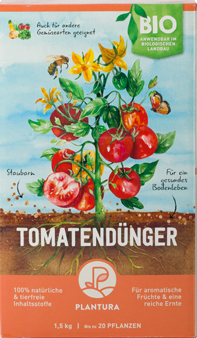
Plantura organic tomato fertilizer
effective long-term effect,
good for the soil, harmless for humans, animals and nature
Examples of medium-consuming plants
The list of medium-consuming vegetables includes many root vegetables:
- Chicory (Cichorium intybus var. foliosum)
- Chinese cabbage (Brassica rapa subsp. pekinensis)
- fennel (Foeniculum vulgare)
- carrots (Daucus carota subsp. sativus)
- Kohlrabi (Brassica oleracea var. gongylodes L.)
- chard (Beta vulgaris subsp. vulgaris)
- parsnip (Pastinaca sativa)
- radish (Raphanus sativus var. Niger)
- Beetroot (Beta vulgaris subsp. vulgaris)
- Many salads
- salsify (Scorzonera hispanica)
- spinach (Spinacia oleracea)
Tip:strawberries (Fragaria) are not heavy consumers, but are also counted among the medium consumers. Ready-to-use compost, which is spread around the plants once or twice a year, is usually sufficient to fertilize strawberries.

Mittelzerzer in the raised bed: All listed medium feeders are also suitable for raised beds. They are best in the second year after creation on the raised bed. Some can also be planted in the first year together with the heavy feeders, as they absorb so many nutrients that the medium feeders do not suffer from an oversupply.
weak feeder
Weak consumers get along well with very little. In the garden, weak feeders are therefore often the last link in the crop rotation.
What are weak feeders?
Weak consumers have a nitrogen requirement of less than 10 g nitrogen per m2. A bed with weak feeders therefore usually does not need to be fertilized at all. Because an excessive supply of nutrients harms many representatives of this plant group more than it helps. legumes, which also belong to the list of weak consumers, even ensure an accumulation of nitrogen in the soil. In this way, he is prepared for the heavy feeders that follow the light-feeding plants in many crop rotations.
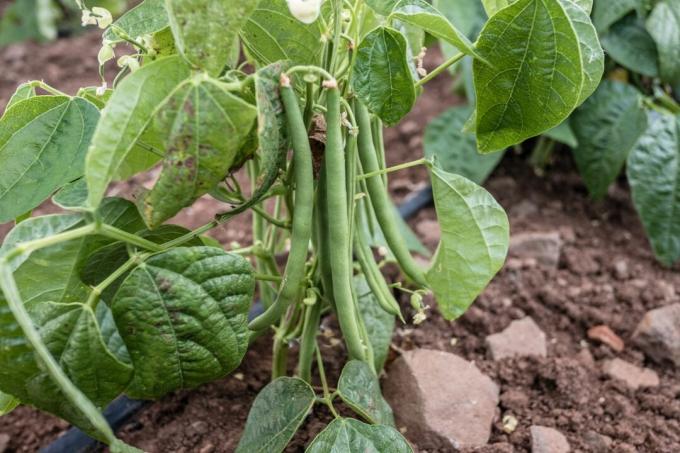
Examples of weak-eating plants
A suitable representative can also be found for every garden from the list of weakly consuming vegetables.
- beans
- Peas (Pisum sativum)
- Lamb's lettuce (Valerianella locusta)
- Good Henry (Chenopodium bonus henricus)
- Chickpeas (Cicer arietinum)
- garlic (Allium sativum)
- turnip (Brassica rapa subsp. rapa var. majalis) and fall turnip (Brassica rapa subsp. rapa subvar. esculenta)
- Many Mediterranean herbs like thyme (Thymus vulgaris), lavender (Lavandula angustifolia) and rosemary (Rosmarinus officinalis)
- Parsely (Petroselinum crispum)
- radish (Raphanus sativus var. sativus)
- Jerusalem Artichoke (Helianthus tuberosus)
- Onion (Allium cepa)

Weak feeders in the raised bed: All of the weak feeders mentioned here are suitable for raised beds. When it comes to beans, however, you should rather use bush beans than runner beans, because runner beans can grow up to 3 m high and would then no longer be possible to reach in raised beds. Only place weak eaters in the raised bed when the nutrient content has dropped significantly in the third year after creation. Because weak consumers sometimes react very sensitively to an excessive supply of nutrients. After a year with weak consumers, the raised bed can be refilled and the cycle begins again.
Summary: How to fertilize heavy, medium and weak feeders
When fertilizing, you should definitely make sure not to give all the fertilizer at once, but in several portions. Our liquid Plantura Organic Tomato & Vegetable Fertilizer For example, you add it to the irrigation water every 1 to 2 weeks. Since it is fixed Plantura organic tomato fertilizer is a long-term fertilizer, 2 fertilizer applications are sufficient - once when planting out and a subsequent fertilization after about 2 to 3 months.
In the following table you will find rough indications regarding the amount of fertilizer. However, the amount actually required depends very much on other factors such as the fertility of your soil or whether you also use compost. It is therefore best to carry out a soil analysis in autumn and to adjust your fertilizer management accordingly.
| total annual requirement | Plantura organic tomato fertilizer (granules) | Plantura Organic Tomato & Vegetable Fertilizer (liquid) |
| heavy feeder | around 300 – 400 g / m2 | around 350 – 400 ml / m2 |
| medium eater | around 150 – 250 g / m2 | around 150 – 250 ml / m2 |
| weak feeder | 0 – 50 g/m2 | 0 – around 100 ml/m2 |
As already mentioned, when growing vegetables, you don’t just have to pay attention to the nutritional requirements. For example, some types of vegetables cannot cope with too little light. Which vegetables in the shade can be installed without problems, you will find out in a separate article.
...and receive concentrated plant knowledge and inspiration directly in your e-mail inbox every Sunday!



